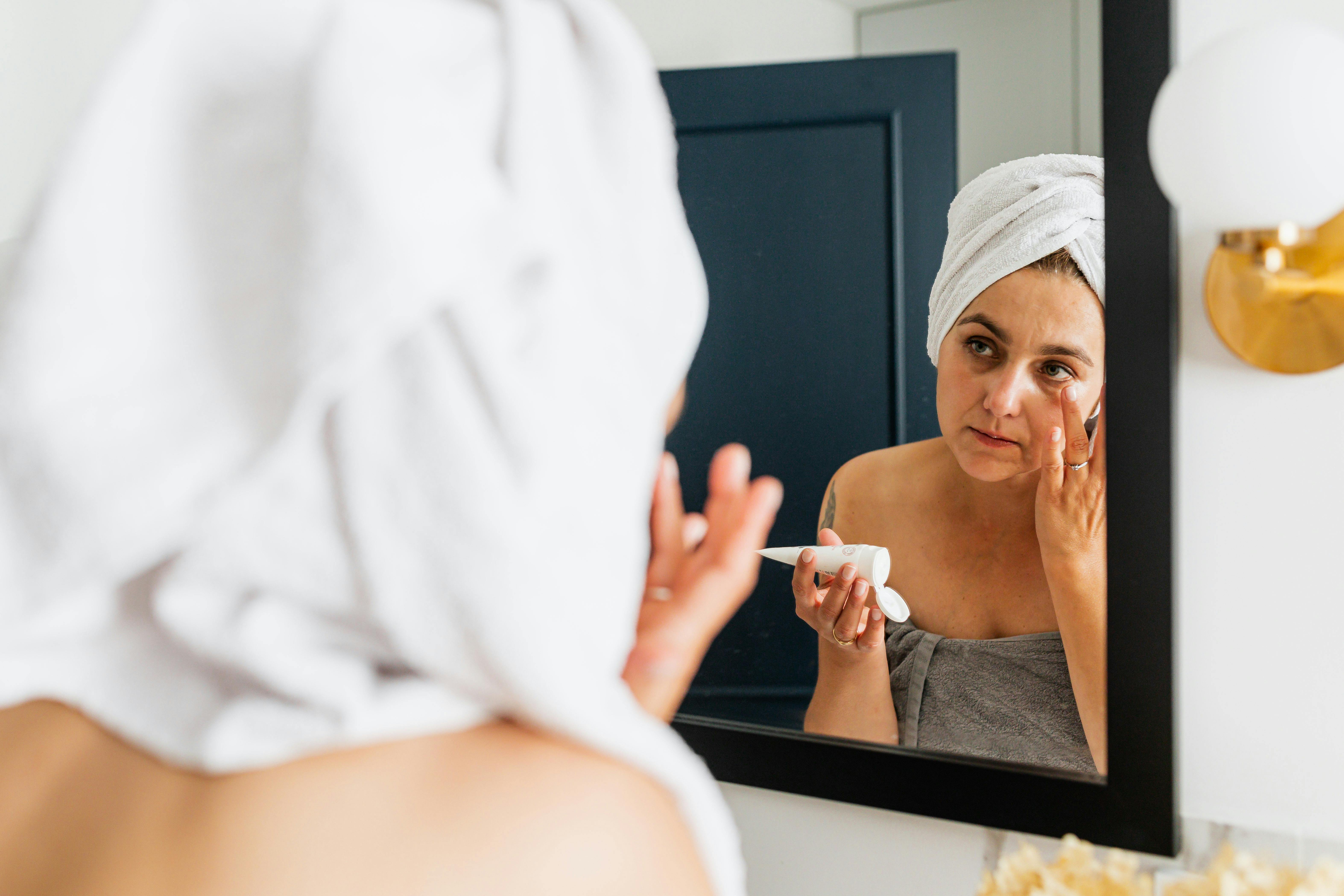Alpha Hydroxy Acids (AHAs) are a group of natural acids commonly used in skincare for their exfoliating properties. They are known for their ability to promote cell turnover, improve skin texture, and enhance overall radiance. Here’s a comprehensive guide to AHAs, including their benefits, how to use them, and what to mix and not to mix with them.
Benefits of Alpha Hydroxy Acids (AHAs)
Exfoliation
- Removes Dead Skin Cells: AHAs help to gently exfoliate the skin by dissolving the bonds between dead skin cells, allowing them to be sloughed off.
- Improves Skin Texture: Regular use of AHAs results in smoother and softer skin.
Brightening
- Reduces Hyperpigmentation: AHAs can help to fade dark spots, sun damage, and other forms of hyperpigmentation, resulting in a more even skin tone.
- Enhances Radiance: Promotes a brighter and more radiant complexion by removing dull, dead skin cells.
Anti-Aging
- Reduces Fine Lines and Wrinkles: By stimulating collagen production and promoting cell turnover, AHAs help to reduce the appearance of fine lines and wrinkles.
- Increases Firmness: Improves skin elasticity and firmness over time.
Hydration
- Hydrating Properties: Some AHAs, like lactic acid, have hydrating properties that can help to improve skin moisture levels.
How to Use Alpha Hydroxy Acids (AHAs)
Application
- Cleanse: Start with a gentle cleanser to remove makeup, dirt, and oil.
- Tone: Apply an AHA toner to prep your skin and enhance the absorption of subsequent products.
- Serum: Use an AHA serum for a more targeted treatment.
- Moisturize: Follow with a moisturizer to lock in hydration and protect the skin barrier.
- Sunscreen: In the morning, finish with a broad-spectrum sunscreen to protect against UV damage, as AHAs can increase photosensitivity.
Product Recommendations
- Pixi Glow Tonic: A popular AHA toner with glycolic acid that exfoliates and brightens the skin.
- The Ordinary Glycolic Acid 7% Toning Solution: Contains 7% glycolic acid for effective exfoliation and improved skin texture.
- Paula’s Choice Skin Perfecting 8% AHA Gel Exfoliant: A gel exfoliant with glycolic acid that smooths and brightens the skin.
- Drunk Elephant T.L.C. Framboos Glycolic Night Serum: Combines glycolic, lactic, and other acids to refine and resurface the skin.
- Sunday Riley Good Genes All-In-One Lactic Acid Treatment: A lactic acid treatment that exfoliates, clarifies, and brightens the skin.
- Neostrata Resurface Foaming Glycolic Wash: A foaming cleanser with glycolic acid that gently exfoliates and cleanses the skin.
- Alpha-H Liquid Gold: A powerful glycolic acid treatment that revitalizes and brightens the skin.
- Peter Thomas Roth 10% Glycolic Solutions Moisturizer: Combines glycolic acid with antioxidants to smooth and hydrate the skin.
What to Mix with Alpha Hydroxy Acids (AHAs)
Compatible Ingredients
- Hyaluronic Acid
- Advantage: Provides deep hydration and helps to counteract any dryness caused by AHAs.
- Disadvantage: No significant disadvantages; hyaluronic acid complements AHAs well.
- Product Recommendation: The Ordinary Hyaluronic Acid 2% + B5 – A hydrating serum that works well with AHA products.
- Niacinamide
- Advantage: Reduces inflammation, strengthens the skin barrier, and helps to improve overall skin texture.
- Disadvantage: No significant disadvantages; niacinamide is gentle and effective with AHAs.
- Product Recommendation: The Ordinary Niacinamide 10% + Zinc 1% – A serum that brightens and calms the skin while improving its barrier function.
How to Apply
- Order: Apply AHA products after cleansing and toning, and before moisturizing.
- Layering: Allow each product to absorb fully before applying the next to maximize effectiveness.
What Not to Mix with Alpha Hydroxy Acids (AHAs)
Incompatible Ingredients
- Retinoids
- Disadvantage: Combining AHAs with retinoids can increase the risk of irritation and dryness due to over-exfoliation.
- Recommendation: Use retinoids at night and AHAs in the morning, or on alternate days.
- Product Recommendation: Neutrogena Rapid Wrinkle Repair Retinol Oil – A potent retinol treatment that improves skin texture and reduces signs of aging.
- Vitamin C
- Disadvantage: Vitamin C and AHAs have different pH requirements for absorption, which can reduce their effectiveness when used together.
- Recommendation: Use Vitamin C in the morning and AHAs at night, or on alternate days.
- Product Recommendation: SkinCeuticals C E Ferulic – A potent vitamin C serum that brightens skin and provides antioxidant protection.
How to Apply
- Order: If you must use both (for different purposes), apply them at different times of the day or on alternate days to prevent irritation.
- Separation: Consider using retinoids and AHAs on different nights, or Vitamin C in your morning routine and AHAs in your evening routine.
Advantages and Disadvantages of Mixing AHAs
Advantages
- Enhanced Benefits: Mixing AHAs with compatible ingredients like hyaluronic acid and niacinamide can enhance hydration, reduce inflammation, and improve overall skin health.
- Comprehensive Care: Combining AHAs with other beneficial ingredients can provide a well-rounded skincare routine addressing multiple concerns.
Disadvantages
- Increased Irritation: Mixing AHAs with strong acids or other potent active ingredients like retinoids can lead to increased irritation, redness, and dryness.
- Reduced Efficacy: Using ingredients with conflicting pH levels (like Vitamin C and retinoids) can reduce the overall effectiveness of AHAs.
Conclusion
Alpha Hydroxy Acids (AHAs) are a powerful addition to any skincare routine, offering numerous benefits such as exfoliation, brightening, and anti-aging. Understanding how to properly use AHAs and what to mix and not to mix with them can help you maximize their benefits while minimizing potential side effects. For more personalized advice and product recommendations, explore our Skincare Essentials section or consult with a skincare professional.




